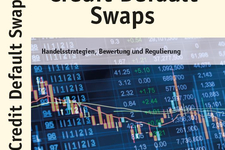After a heavily indebted company has filed for bankruptcy, its stock price typically drops significantly and enters a new regime. On the one hand, the stock price is expected to approach the value zero eventually, since the remaining firm value is ultimately distributed among its creditors with minimal leftovers for equity owners. On the other hand, until a negligible stock price level is attained, speculative trading can lead to high volatility and even extreme upward spikes. Recent examples for such situations are the stock prices of Hertz Global Holdings Inc. and Wirecard AG. A bullish risk reversal trade is one possible alternative to an outright stock purchase that speculates on such a spike. Similarly, a bearish risk reversal trade is one possible implementation to technically short-sell the stock. In both cases, the essential profile implemented by the risk reversal trade mimics that of an equity forward, with the sole distinction that typical put and call options in the marketplace are American-style. The essential risk is whether the involved options expire before or after the stock price has arrived at an absorbing state of negligible value. In order to assess the risk reversal’s attractiveness traders thus need to compare their own subjective opinions regarding the equity forward with those implied by the observed put and call prices. The task of backing out the equity forward from American-style prices is a non-trivial numerical challenge in general. The present article introduces a method to compute model-free lower and upper bounds on the equity forward that are sharp, i.e. attained by some arbitrage-consistent models.
Terms & Conditions
Please carefully read our Legal Notices and our Privacy Policy.
In this context, we must draw your particular attention to the following legal conditions:
Neither the information nor the opinions made available on this Website constitute an invitation, offer or recommendation to purchase, sell or otherwise dispose of a financial instruments, nor to make another transaction or to provide investment advice or any other service. Any investment decision relating to one of the products described herein must only be based on the respective sales documents (e.g. sales prospectus, semi-annual or annual reports, key investor information documents etc.).
The products referred to on this website may not be offered in all jurisdictions and may only be purchased by those investors entitled to do so. The information and contents of this website are not addressed to any persons or legal entities whose domicile prohibits the distribution of this information. All persons and legal entities whose domiciles are subject to a foreign jurisdiction should inform themselves about and observe these restrictions.
The information on this website is not addressed to the USA. US nationals, legal entities and persons with residence in the USA may not access this website. The information on this website may not be distributed or passed on in the USA. Xaia products referred to on this website will not be registered under the United States Securities Act of 1933 and no approval has been obtained in compliance with the US Commodities Exchange Act of 1936. Xaia products listed on this website may not be offered or sold in the USA either to citizens, or to US residents, or to legal entities domiciled in the USA.
The disclaimer confirmation of visitors to this website is stored as a necessary cookie on your device, is valid for a period of 90 days, however this can be reset at anytime by deleting your browser’s cookies. For further information, please see our Privacy Policy.



 Newsletter
Newsletter